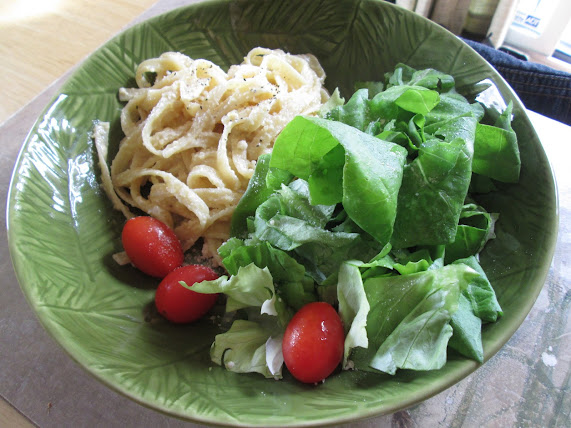 |
| I used shallots and celery for aromatics, tilapia for protein, seafood stock, chopped fresh spinach for veggies, savory for flavoring |
I used to follow it to the T, and finally understood that really, it was more like guidelines (as so many recipes truly are).
And then I started being able to use the technique given in that recipe and substitute my own flavors and ingredients, depending on what was in season and available.
No matter what ingredients you use, this is definitely a prep-ahead-friendly recipe. Chop and measure everything ahead of time, combining ingredients by category. You can also freeze this as a meal kit...combine ingredients by category, put them in vacuseal bags or ziptop bags, and freeze. Thaw before cooking.
The use-what-you-have components are:
- fat for sauteing: use butter, olive oil, canola oil, lard, mojo de ajo
- aromatics: use onions, shallots, celery, carrots, leeks or any combo thereof
- stock: chicken, seafood, veggie (not so much beef here)
- protein: fish, chicken, shrimp, scallops, crab (again, not so much beef)
- veggies: chopped bell pepper, snow peas, chopped greens, broccoli, peas, corn kernels, pre-cooked squash cubes
- flavoring: citrus zest, minced herbs
Some favorite combinations are shallots with shrimp, green peas and thyme; celery/onion/carrot with chicken, pepper and savory; crab, leeks, spinach and lemon zest.
Chop, measure, and fridge everything in advance for next-day or same-day cooking. You can also freeze the components ahead. To save space with liquids, either freeze wine and stock in ice cube trays beforehand to include in the freezer kit or pour the liquid into a ziptop bag, carefully press air out of the bag, seal and lay flat on a tray to freeze.
Pin It


